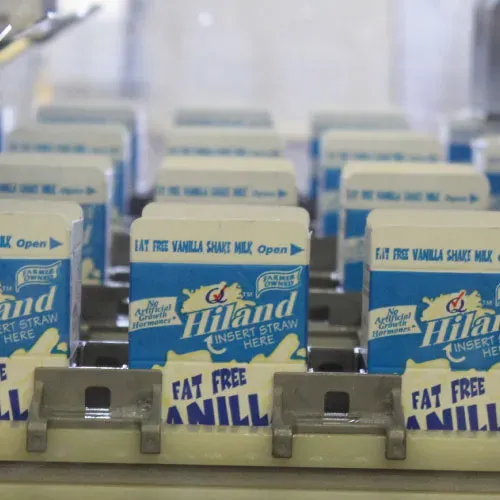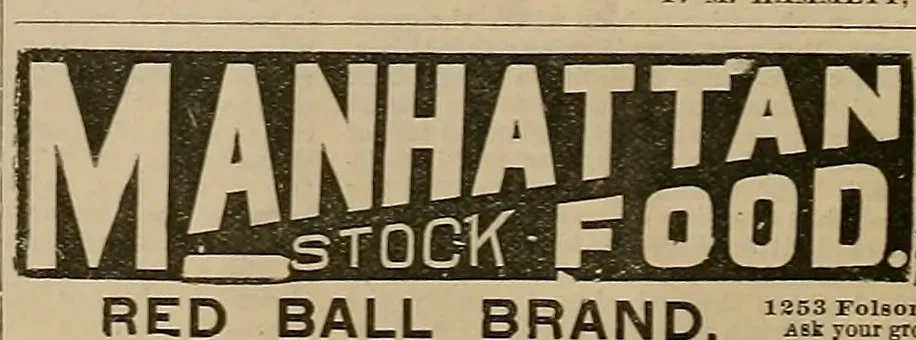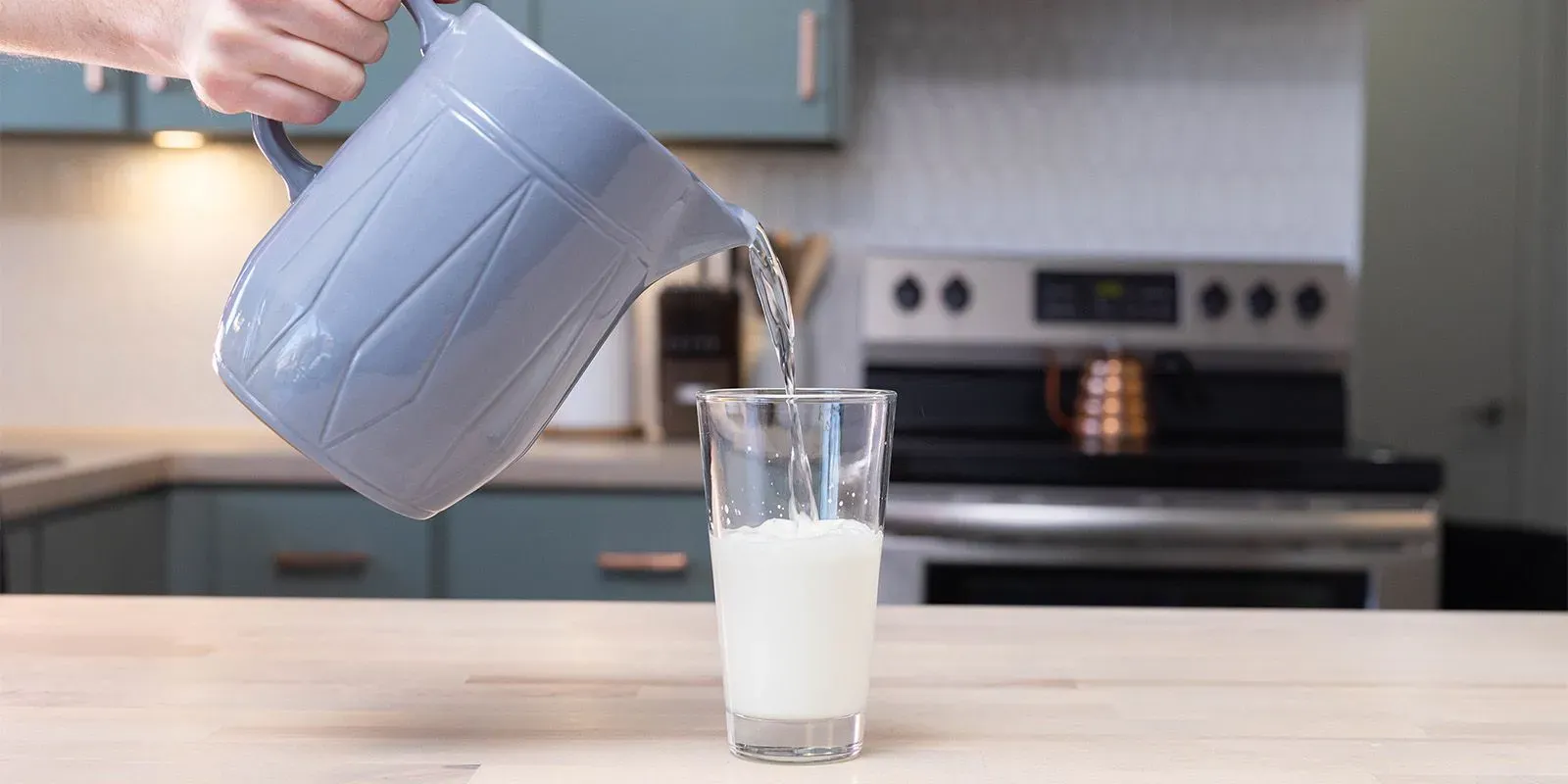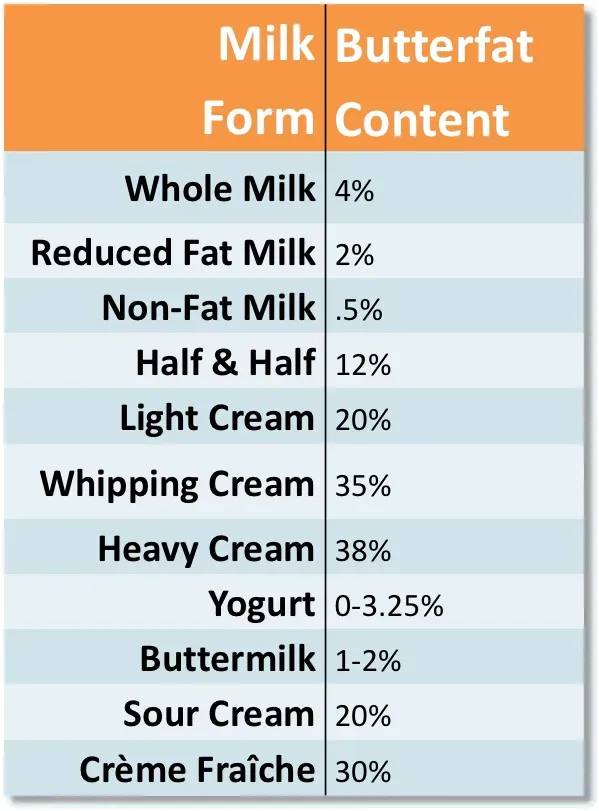Table of Contents
Ever stood in the dairy aisle, staring at the rows of milk cartons – whole, 2%, 1%, skim – and wondered if the lower fat versions are just... well, watered down? It’s a common thought, maybe born from the thinner texture or lighter taste compared to creamy whole milk. The question, "is low fat milk just watered down?" pops into a lot of heads. It seems simple enough, right? Just add some water to whole milk and call it a day? If only things in the food world were that straightforward. The reality of how milk goes from cow to carton, especially when it comes to reducing fat, is a bit more involved than simply turning on a tap. This article dives into the actual process, the regulations that govern milk production, and what's really happening inside that low-fat carton you grab off the shelf. We’ll explore the journey milk takes, how fat is managed, and what the nutritional differences truly mean for you. Let's pour out the facts.
Separating Fact from Fiction: Is Low Fat Milk Just Watered Down?

Separating Fact from Fiction: Is Low Fat Milk Just Watered Down?
Let's get straight to it because the question, "is low fat milk just watered down?" is one that pops up constantly in conversations about dairy. It’s easy to see why someone might think that. You pour a glass of skim or 1% milk, and it looks thinner, less rich than whole milk, maybe even a bit... watery? But the simple answer is a resounding no. Low-fat milk isn't created by taking whole milk and diluting it with water. That’s a myth that needs busting right now. The process is actually about removing components, specifically fat, not adding something (like water) to thin it out. Understanding this is the first step to separating the fiction from the actual science and regulation behind the milk in your fridge.
From Udder to Carton: The Industrial Process

From Udder to Carton: The Industrial Process
The journey of milk from the cow's udder to the carton in your fridge is a fascinating industrial ballet, far more complex than just milking a cow and pouring it into a jug. Once milk leaves the cow, it's immediately cooled down rapidly on the farm to inhibit bacterial growth. Think of massive stainless steel tanks keeping it chilled before a tanker truck arrives to collect it. These trucks are essentially giant, mobile refrigerators, ensuring the milk stays cold during transport to the processing plant. At the plant, the raw milk undergoes rigorous testing for quality, safety, and composition before it's accepted for processing. This initial phase is all about preserving freshness and ensuring the milk is safe and meets required standards before it even gets close to being pasteurized or having its fat content adjusted. It's a tightly controlled operation designed to handle a perishable product efficiently and safely on a large scale, setting the stage for the transformations it will undergo next.
Skimming the Surface: How Fat is Removed

Skimming the Surface: How Fat is Removed
The Centrifugal Spin Cycle
so we've got the raw milk chilled and tested at the plant. Now comes the part where the magic (or rather, the science) happens to answer if is low fat milk just watered down. Instead of adding water, processors use a machine called a centrifuge, often referred to as a separator. Think of it like a super-fast spin dryer for milk. Milk naturally separates if you let it sit – the cream, which is lighter and contains most of the fat, floats to the top. This is how people used to make skim milk way back when, just literally skimming the cream off the top. But doing that on an industrial scale? Takes too long, isn't precise enough. The centrifuge spins the milk at incredibly high speeds, creating a force that separates the heavier skim milk from the lighter cream almost instantly. The cream is siphoned off one spout, and the skim milk comes out another. It's a clean, efficient split.
Putting it Back Together (Sort Of)
Once the milk is separated into fat (cream) and non-fat liquid (skim milk), the processors can then standardize it to different fat percentages. For skim milk, they essentially just take the non-fat liquid. For 1% or 2% milk, they add a specific, measured amount of the separated cream back into the skim milk. Whole milk, by definition, contains around 3.25% fat, and that percentage is achieved by either keeping the original milk composition intact or, more often in modern processing, separating it all and then adding back the appropriate amount of cream to meet the standard. This precise re-mixing is how they guarantee that a carton of 2% milk always has, well, 2% fat. It’s not about adding water to whole milk; it's about taking whole milk apart and putting just the right amount of fat back in.
Here's a quick look at the typical fat percentages:
- Skim Milk: Less than 0.5% fat
- 1% Milk: 1% fat
- 2% Milk (Reduced Fat): 2% fat
- Whole Milk: Around 3.25% fat
Milk Regulations: What's Allowed and What's Not

Milk Regulations: What's Allowed and What's Not
Uncle Sam's Watchful Eye: Keeping Milk Pure
If you're worried that milk processors are secretly adding water to your low-fat milk carton, you can probably ditch that concern. Food regulations, particularly in places like the United States, are pretty strict about what can and cannot go into milk that's sold commercially. The Food and Drug Administration (FDA) has clear definitions for different types of milk – whole, reduced-fat (2%), low-fat (1%), and skim. Adding plain old water to milk is a big no-no under these regulations. It's considered adulteration, essentially diluting the product and potentially misleading consumers about its nutritional value and composition. Processors face serious penalties if they're caught doing this. Think of it as a legal framework designed to ensure that when the label says "milk," you're getting milk, not some watered-down impostor. They're not just hoping companies do the right thing; there's oversight and testing involved.
What's Actually Permitted in the Vat
So, while adding water to increase volume is forbidden, the regulations *do* allow for certain processes, like the fat standardization we talked about earlier. This is the legal and accepted method for producing reduced-fat and skim milk. They remove fat using centrifugation and then, for 1% or 2%, add back a precise amount of cream. This is done under controlled conditions and is part of meeting the specific legal definition for each milk type. Other things sometimes added to milk, like Vitamin A and Vitamin D, are also regulated and listed on the label. These additions are generally for nutritional fortification, especially since fat-soluble vitamins are reduced when fat is removed. The key takeaway here is that any modification to milk composition must adhere to strict standards and labeling requirements. It’s not a free-for-all in the dairy plant; there are rules in place to ensure consistency and prevent shady practices.
Here's a quick look at what regulations aim to prevent vs. what they allow:
- **Forbidden:** Adding water to dilute milk.
- **Forbidden:** Selling milk with less than the stated minimum fat percentage (unless it's skim).
- **Allowed:** Separating cream from skim milk.
- **Allowed:** Adding specific amounts of cream back to skim milk to create 1% or 2% milk.
- **Allowed:** Fortifying milk with vitamins (like A and D), which must be declared on the label.
- **Allowed:** Pasteurization and homogenization.
Nutritional Showdown: Fat, Vitamins, and Calories Compared

Nutritional Showdown: Fat, Vitamins, and Calories Compared
Counting the Calories and Fat Grams
so now we know low-fat milk isn't just watered down whole milk. But what does taking that fat out actually *do* to the milk nutritionally? The most obvious change is the fat content, naturally. Whole milk clocks in at around 3.25% fat, which contributes significantly to its calorie count. When you move down to 2%, 1%, or skim, you're peeling away those fat grams layer by layer. Skim milk has almost no fat, less than 0.5%. This directly impacts the calorie count. A cup of whole milk has more calories than a cup of skim or 1% milk, primarily because fat is more calorie-dense than protein or carbohydrates. If you're keeping an eye on your calorie intake, switching from whole to skim can make a noticeable difference over time, especially if milk is a regular part of your diet. It's the main reason many people opt for lower-fat versions.
Vitamins, Minerals, and Fortification
Beyond fat and calories, milk is a good source of other important nutrients. Calcium and Vitamin D are the big ones everyone talks about, crucial for bone health. Riboflavin, Vitamin B12, potassium, and phosphorus are also present. Here's where things get interesting: Vitamin A and Vitamin D are fat-soluble. This means they are naturally found in the fat portion of milk. When you remove the fat to make low-fat or skim milk, you also remove a good chunk of these vitamins. To compensate for this, regulations often require milk processors to add Vitamin A and Vitamin D back into reduced-fat, low-fat, and skim milk. This process is called fortification. So, while the *natural* levels might be lower in the non-fat liquid, the fortified versions usually end up having similar or sometimes even higher levels of these specific vitamins compared to whole milk. It's a way to ensure that even when you're choosing lower fat, you're not missing out on key nutritional benefits.
Here's a rough comparison per 8-ounce glass (values can vary slightly by brand):
Nutrient | Whole Milk (approx. 3.25% fat) | 2% Milk (approx. 2% fat) | 1% Milk (approx. 1% fat) | Skim Milk (less than 0.5% fat) |
|---|---|---|---|---|
Calories | 150 | 120 | 100 | 80 |
Total Fat (g) | 8 | 5 | 2.5 | 0-0.5 |
Vitamin D (IU) | 100 (often fortified) | 100 (fortified) | 100 (fortified) | 100 (fortified) |
Vitamin A (IU) | 250 (often fortified) | 500 (fortified) | 500 (fortified) | 500 (fortified) |
Calcium (mg) | 300 | 300 | 300 | 300 |
Taste and Texture: Why They Differ

Taste and Texture: Why They Differ
The Mouthfeel Matters: It's All About the Fat
so we've established that the answer to "is low fat milk just watered down" is a firm no. It’s about removing fat, not adding water. And honestly, that fat removal is the biggest reason why low-fat milk feels and tastes different. Think about it: fat is creamy. It coats your tongue. It gives substances a certain richness and viscosity, that luxurious mouthfeel that whole milk has. When you take a significant amount of that fat out, the liquid left behind is naturally going to feel thinner. It doesn't coat your mouth in the same way. It slides right over. This isn't because water was added; it's because the primary component responsible for that thick, rich texture has been significantly reduced or eliminated. It's like comparing heavy cream to half-and-half – the difference isn't added water, it's the fat percentage doing the heavy lifting on texture.
Stripping Away Flavor: Fat Carries Taste
Beyond texture, fat also plays a crucial role in how we perceive flavor. Many flavor compounds are fat-soluble, meaning they dissolve in fat. When you remove fat from milk, you inevitably remove some of these flavor compounds along with it. Whole milk has a more complex, often described as "fuller" or "richer," flavor profile precisely because it retains more of these fat-soluble elements. Low-fat and skim milk, lacking that fat base, tend to taste less complex, sometimes even a bit... flat. Some people might even describe the taste difference as "weaker," which can again lead back to that mistaken idea, "is low fat milk just watered down?" But it's not weaker because it's diluted; it's less flavorful because the fat, which held onto certain flavors, is gone. It's a direct consequence of the skimming process.
Quick comparison of the sensory experience:
- **Whole Milk:** Creamy texture, rich mouthfeel, full-bodied flavor.
- **Low-Fat/Skim Milk:** Thinner texture, lighter mouthfeel, less complex flavor.
Cost Considerations: Is Whole Milk Cheaper?

Cost Considerations: Is Whole Milk Cheaper?
Comparing Prices at the Dairy Aisle
Now, let's talk about the elephant in the room for many shoppers: the price tag. You might look at a gallon of whole milk next to a gallon of skim or 2% and notice they're often priced pretty similarly, sometimes with the lower-fat options being slightly more expensive. This might seem counterintuitive if you still have that lingering thought, "is low fat milk just watered down?" because, logically, shouldn't something "watered down" be cheaper? But as we've covered, it's not about adding water; it's about removing fat. The process of separating the cream from the skim milk using centrifuges, standardizing the fat content precisely, and then fortifying with vitamins all adds steps to the production chain. While whole milk might undergo pasteurization and homogenization, the lower-fat versions require that extra step of fat separation and re-mixing. These additional processing steps, combined with factors like consumer demand and dairy market dynamics, contribute to the final price you see at the grocery store. So, while whole milk might *seem* like it should be the premium product due to its fat content, the manufacturing reality often means the lower-fat versions require just as much, if not slightly more, effort to get into that carton.
So, Is Low Fat Milk Just Watered Down? The Final Verdict

So, Is Low Fat Milk Just Watered Down? The Final Verdict
Dispelling the Dilution Myth Once and For All
Alright, let's cut to the chase and definitively answer the question that started this whole exploration: is low fat milk just watered down? Based on how milk is processed in the modern dairy industry, the answer is a clear and unequivocal no. It's not about adding water to whole milk to stretch it out or reduce the fat content. That's simply not how it works, and frankly, it's illegal under food regulations. The process involves separating the milk's components, primarily the fat (cream) from the liquid (skim milk), using high-speed centrifuges. Then, for 1% or 2% milk, a precise, measured amount of that separated cream is added back into the skim milk base. Skim milk is essentially just the liquid left after almost all the fat has been removed. Thinking it's watered down is like thinking a decaf coffee is just regular coffee with extra water added – it misses the fundamental process of removing something, not adding something else to dilute it.
Understanding the "Why" Behind the Different Milks
The differing taste and texture you notice between whole and lower-fat milk aren't a sign of dilution; they're a direct consequence of the fat content. Fat is what gives whole milk its creamy mouthfeel and carries many of those richer flavor compounds. When you strip away the fat, you inherently change these characteristics. It's a physical and chemical reality of reducing a key component. The industry creates these different versions not by nefarious watering, but to offer consumers choices based on dietary preferences, calorie goals, or simply taste. Some people prefer the lightness of skim, while others crave the richness of whole. Neither is inherently "better" or "worse" because one is "watered down." They are simply different products resulting from a controlled process of fat separation and standardization.
As my old chemistry professor used to say, "Dilution adds solvent. Separation removes solute." In this case, fat is the solute being removed, not water being added as a solvent.
What This Means for Your Dairy Choices
Knowing that low-fat milk isn't just watered down whole milk should hopefully clear up any lingering doubts and perhaps shift how you view the dairy aisle. Your choice between whole, 2%, 1%, or skim milk boils down to nutritional goals and personal preference, not whether one has been surreptitiously diluted. If you're counting calories or saturated fat, lower-fat options make sense. If you prioritize taste and texture and those extra calories fit your diet, whole milk is there. The processing ensures you're getting milk that meets specific standards, fortified with vitamins lost during fat removal. So next time you pour a glass of skim and think it tastes thin, remember it's thin because the fat isn't there, not because someone added extra water. It's the intended product, not a compromised one.
So, Is Low Fat Milk Just Watered Down? The Final Sip
After looking at how milk is processed, the answer to "is low fat milk just watered down?" is a clear no. The dairy industry doesn't simply add water to whole milk to make 2% or skim. The process involves separating the cream, which holds most of the fat, from the liquid milk. Then, a specific amount of cream is added back in to achieve the desired fat percentage – 2% for reduced-fat, 1% for low-fat, and none for skim. While lower-fat milk does have a higher natural water content *relative* to its fat solids compared to whole milk, this isn't because water was added. It's a result of the fat being taken out. So, you're not getting a watered-down product; you're getting milk with less fat, processed specifically to meet those standards.
